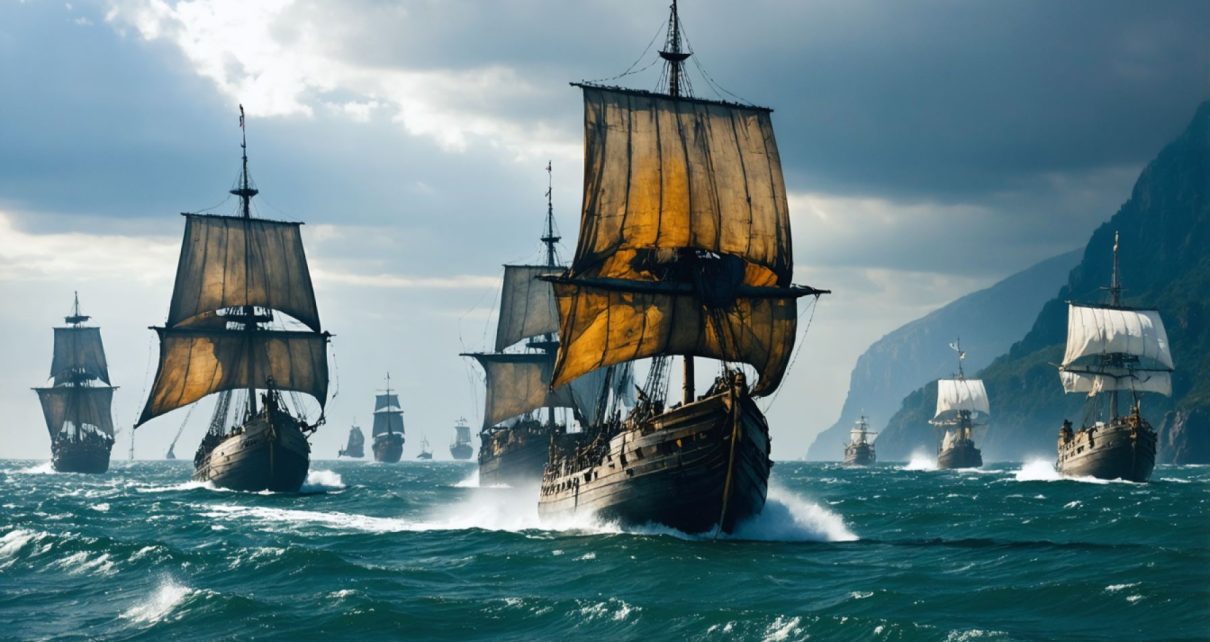- Ancient Nordic Bronze Age societies (circa 1700–500 BCE) exhibited remarkably advanced seafaring skills, navigating the Baltic Sea long before the Vikings.
- Research combined maritime simulations and archaeological evidence, using tools like the “Voyage Optimization Tool” to understand historic sea routes.
- Experiments with reconstructed vessels, such as the ‘Ullerslev’, revealed that the open-sea route could be 10–25% faster than coastal travel but riskier under bad weather.
- Nautical petroglyphs, including those in Sweden’s Tanum, reflect the era’s vibrant maritime culture and spiritual sea connections.
- Experimental archaeology highlighted the mariners’ skill in navigating using solar cues and landscape features, despite lacking compasses or maps.
- The Baltic Sea functioned as a connector for ancient communities, facilitating the spread of materials and cultural styles across Scandinavian shores.
Beneath the shifting tides of the Baltic Sea, long before the storied exploits of the Vikings, ancient communities embarked on daring maritime journeys. Recent research, meticulously combining maritime simulation tools with archaeological evidence, has illuminated the remarkably advanced seafaring skills of the Nordic Bronze Age societies (circa 1700–500 BCE).
Imagine standing atop a knoll in northern Denmark, gazing across the Baltic’s steel-gray expanse towards the Swedish coast when these early mariners set out. They ventured from Djursland, Denmark to the west coast of Sweden, traversing roughly 80 kilometers. The mariners faced a choice as stark as the dividing line between calm and stormy seas: a swift but perilous open-sea crossing or a safer, scenic coastal voyage.
Led by Boel Bengtsson and Álvaro Montenegro, an interdisciplinary team of researchers—ranging from archaeologists and maritime modelers to ethnographers—embarked on a quest. Their aim: decipher the sea routes of ancient Nordic seafarers. Through the groundbreaking use of the “Voyage Optimization Tool,” adapted with data from reconstructed prehistoric vessels, the team set out to compare these two potential navigation paths.
The study, a harmonious blend of history and applied science, utilized replicas of plank-built boats, such as the ‘Ullerslev’, whose seaworthiness was tested under various conditions to gather data on speed, maneuverability, and crew requirements. Armed with this knowledge, they inputted variables into oceanic models that considered climate, wind, and June’s regional currents—ideal for seaborne expeditions. Thousands of simulated voyages suggested the open-sea route could cut travel time by 10–25% compared to coastal paths, albeit at greater risk under adverse winds.
Parallel to simulations, the research leaned on a trove of nautical petroglyphs from the area, invoking visions of ceremonial and emblematic connections to the sea. Sites like Sweden’s Tanum feature boat depictions eerily similar to archaeological reconstructions, strengthening theories of a vibrant and spiritually rich maritime culture.
Experimental archeology plays a quintessential role, offering tangible experiences of sailing such vessels and providing insights that transcend technology’s reach. These ancient seafarers, lacking compasses or maps, displayed an impressive understanding of marine and atmospheric patterns, navigating by solar cues and landscape features—methods reminiscent of present-day indigenous mariners.
This study challenges perceptions of these Bronze Age societies as merely coastal. Bold explorers, they likely engaged in extensive networks across the Scandinavian landscape, thus explaining the stylistic affinities and shared materials discovered across distant shorelines.
The research unveils a world where the Baltic Sea wasn’t a daunting barrier but a vital connector—a testament to human resilience and innovation at the dawn of civilization’s maritime endeavors.
Unlocking the Secrets of Nordic Bronze Age Seafaring: What Modern Mariners Can Learn
Overview
The Nordic Bronze Age (circa 1700–500 BCE) was marked by an astonishing level of seafaring skill and maritime innovation. Recent research highlights how prehistoric societies navigated the challenging Baltic Sea, connecting them to broader networks across Scandinavia. This study not only sheds light on historical sea routes but also provides insights applicable to modern maritime practices.
Key Discoveries and Insights
1. Advanced Maritime Skills: Despite lacking modern navigation tools like compasses or detailed maps, these ancient mariners used solar positioning and coastal landmarks. This echoes techniques still employed by some present-day indigenous maritime cultures, such as the Polynesians.
2. Calculated Risks: Simulations show that the ancient sailors likely took calculated risks by choosing open-sea routes, which could reduce travel time by up to 25% but posed greater threats if weather conditions worsened.
3. Cultural Exchange and Connectivity: The research supports the idea that these routes facilitated significant cultural and material exchange across the Baltic region. Similar artifacts and stylistic elements have been found across distant areas, indicating extensive seafaring networks.
Real-World Use Cases
– Modern Navigation Systems: By examining ancient navigation methods, researchers can develop improved algorithms for autonomous maritime systems, enhancing route optimization in modern shipping.
– Cultural Heritage Tourism: Coastal regions in Scandinavia can harness this research to create educational and culturally enriching tourism experiences focused on prehistoric maritime heritage.
Pros & Cons Overview
Pros:
– Expands understanding of prehistoric maritime innovation.
– Provides valuable data for modern maritime technology development.
– Strengthens regional cultural identity through shared history.
Cons:
– Interpretative challenges in archaeological data may lead to varying conclusions.
– Risk of over-romanticizing ancient capabilities without sufficient technological context.
Market Forecasts & Industry Trends
– The study points towards a growing trend in using interdisciplinary methodologies combining archaeology, ethnography, and advanced simulation tools. This can significantly impact the field of experimental archaeology and heritage preservation.
Future Developments
– Researchers are looking to apply these simulation techniques in other ancient maritime contexts globally, potentially transforming our understanding of prehistoric navigation.
Actionable Recommendations
– For Maritime Enthusiasts: Consider exploring reconstructed ancient vessels or participating in experimental archaeology projects to gain hands-on understanding of historical seafaring techniques.
– For Educators and Museums: Incorporate findings from this study into educational programs to spark interest in ancient technologies and their modern applications.
For further insights into seafaring history and cultural heritage tourism, you can check National Geographic.
The findings offer a fascinating glimpse into the maritime prowess of ancient societies and reveal the enduring legacy of their innovations.



